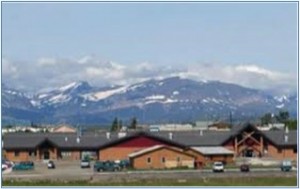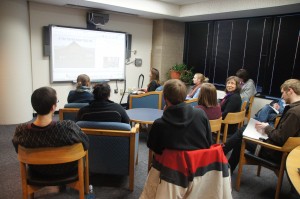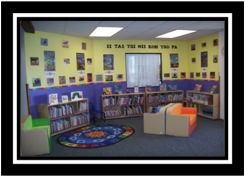
Last week, we took a closer look into tribal academic libraries focusing on American Indian pedagogy and examples of academic libraries on reservations. As a hopeful, future academic librarian, it was fascinating to compare the missions of traditional academic libraries to tribal academic libraries.
But before examining tribal libraries today, it is essential to understand the historical relationship between many American Indians and the American education system.
Western and Indigenous Education
For many American Indian communities, the American school system has been a sensitive topic. Throughout the late 19th century and early 20th century, the United States government forced assimilation by sending school-aged children to residential boarding schools to “kill the Indian…save the man.”
The objective of these boarding schools was not to educate American Indian children, but instead to take away their culture. What is left today in many Native communities is distrust for people working in powerful positions in the government and education.
For many American Indians, education philosophy is very different from Western cultures. In many Native communities the idea that there is not an answer to every question is accepted as being okay. For many Western cultures, there needs to be an answer or explanation for every question.
The idea that life isn’t perfect and that we shouldn’t try to be perfect is another aspect to the American Indian pedagogy that is not widely seen in the American school system. In public schools, the end answer is more important than the process, which is the opposite in many American Indian communities.
Even with just these two examples of differences in education, it’s clear that the American school system would not represent American Indians. And how is someone supposed to learn in an environment where they don’t feel represented?
Tribal Colleges

Photo by Aaron LaFromboise
In response to the distrust of the American school system and not feeling represented in the curriculum, many Native communities are writing their own lesson plans. Since the early 1970s, Native communities have been establishing tribal colleges on the reservation and have grown to be a huge success.
The mission of tribal colleges offers a blend of Native culture and academic preparation. These colleges aim to not only educate their students but to also preserve culture and aid the community, which is important to the American Indian pedagogy.

One such example of a Tribal college that blends the Native pedagogy and Western academic vigor is Blackfeet Community College (BFCC) in Browning, Montana. This week we had the pleasure of speaking with a fellow SLIS student and Library Technician at the Medicine Spring Library at Blackfeet Community College, Aaron LaFromboise. She Skyped in with us during class to talk to us about tribal college libraries, the Blackfeet Nation, and her job working in a tribal college library.
Aaron introduced our class to her beautiful reservation — next-door to Glacier National Park—and to the BFCC Library. Although, Medicine Spring Library is an academic library on campus, the importance of community can be seen through the library’s design and events.

One of the newest additions to the library is the children’s section (which Aaron painted!). The space is now an open, friendlier environment with lower bookshelves so children can see all of their choices. Sometimes the kids will lie on the floor and spread out all of the books, but Aaron doesn’t mind because for some of these kids, this is their only opportunity to interact with books.
It was difficult for me to imagine growing up without access to books. Some of my earliest memories are going to the library and participating in summer reading programs.
Art shows for local artists are also held at the library, which brings in many community members who wouldn’t already use the library. Traditional academic libraries are overwhelmingly geared towards their institution. However within tribal communities, the academic library may be the only library close by. The importance of community and the idea of teaching children– because they are the future– are visible at Medicine Spring Library.
The Medicine Spring Library incorporates their Native language into the library, starting with signs around the library and the rest of campus. The word for library in Blackfeet is II Tai Tsi Nii Koh Tso Pa, which translates to “the place where we tell our stories.” Just from this definition, we see how important the community is to this academic library. The Blackfeet culture is not lost within this academic institution, but is celebrated.
Thank you to Aaron for spending time with us!
-Brenna DeGan
